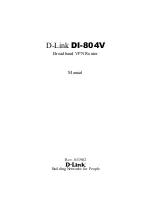
Introduction
5-6
-
Memory-to-memory transfer granularity of 8, 16, and 32 bits. Only the
number of programmed bytes is transferred; that is, there are no trailing
or dirty bytes at the end of transfer.
-
TIPB-to-memory transfer:
J
When performing DMA transfers from a TIPB peripheral, is it ideal that
the peripheral FIFO size be 16 bytes, which corresponds to the DMA
channel FIFO size.
J
If the peripheral FIFO size is not 16 bytes, use a general-purpose timer
as a time-out counter to avoid the possibility that some data might
remain in the channel FIFO at the end of frame. When the MPU
receives the interrupt, it must check the DMA channel FIFO status and
read the data located in the FIFO, if needed.
Additional functional features and limitations of the DMA controller include:
-
General-purpose DMA channels can perform 4x32 bit bursts; this is the
only burst mode supported by the non-LCD DMA channels. Bursts can
only be performed on the IMIF, EMIFF, EMIFS, and local bus ports.
-
All LCD DMA accesses are performed in bursts of 8 x16 bits. The LCD
video buffer data must be a multiple of 16 bytes. The start address and end
address must be aligned on a 16-bit boundary.
-
General-purpose channel priority on the external EMIFF/IMIF bus is
software programmable.
-
LCD channel FIFO size is 64x17 bits.
-
The interface between the LCD controller and the DMA controller uses a
different protocol from the other DMA channels. The LCD controller is the
master of this interface, and it generates the addresses according to the
FIFO status.
-
The LCD controller allows the use of one or two video buffer(s) and is
configurable.
-
No bursts are supported on the TIPB and MPUI DMA interfaces.
-
Burst transfers can be combined with single or double-indexed addressing
modes, but the burst request is only issued if contiguous addresses can
be ensured for the length of the burst. For example, if the element index
contains a value that causes noncontiguous addresses between
elements, then the system DMA logic does not generate burst requests.
Table 5–1 lists the possible data transfers, and Table 5–2 lists the possible
transfer sizes and types.















































